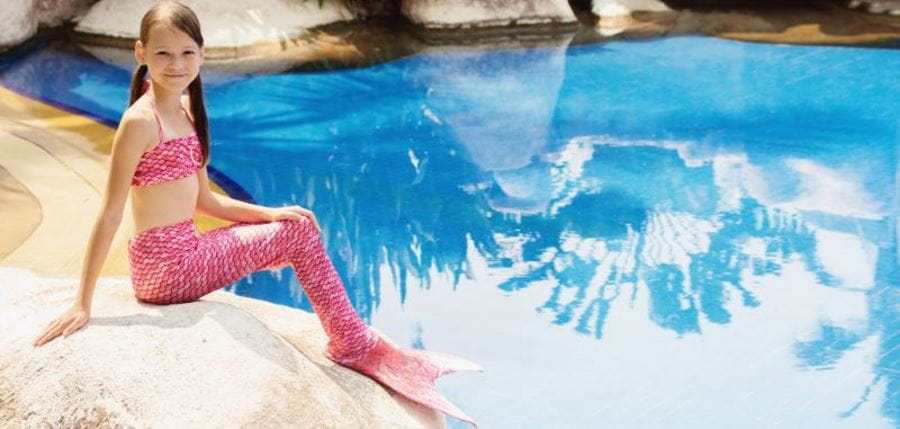
What are mermaid tails and fins?
Mermaid tails and fins have become a popular aquatic toy mainly targeted to children. Both feet go into a single fin that looks like a ‘mermaid’ tail which allows people to swim using a dolphin like movement. There are two types:
- One that is fully enclosed from the waist down (like the photo above)
- The other is a single fin for the feet only without the extended ‘tail’.
What are monofins?
Monofins are similar, in that both feet fit into one fin. However, these fins are bigger and made of fibreglass or carbon with rubber foot pieces. These types of monofins are usually used for competition, as Fin Swimming is a competitive sport at world championship level. People also swim with monofins for fitness purposes. It is best to use monofins under a qualified coach.
What dangers do mermaid tails and fins pose?
These products are considered to be aquatic toys. Like all aquatic toys, safety precautions need to be taken whilst playing in and around the water. Swimming with mermaid tails and fins should only occur under active adult supervision at all times. Be aware that some tails and fins are fully enclosed from the waist down, effectively binding the legs together. Recent research has found that mermaid tails and fins that bind a child’s legs together reduce their swimming ability by up to 70%, and make it difficult for them to balance and support themselves whilst standing or swimming in a pool - this may increase their risk of drowning. Consider choosing fins that do not bind the legs together and that easily release the feet.
Who can swim with mermaid tails and fins?
The wearer should be an experienced and competent swimmer. When children first use mermaid tails and fins, they should practise in the water with an adult. While wearing the tail or fin, it is important they can competently float on their front and back and manoeuvre their body into an upright position. They should be able to independently release their feet from the fin and be able to move to a safe position e.g. to the side of the pool, to the ladder or shallow water. It may take a few times before they feel fully capable and confident to swim with the tail or fin, especially when first attempting dolphin kicking. Movements that disorientate like somersaults, handstands and going under or through submerged objects shouldn’t be attempted. Mermaid tails are not recommended for young swimmers (under the age of 7) or non-swimmers.
What is the best environment for using mermaid tails and monofins?
These products should only be used in controlled environments such as a swimming pool under active adult supervision. It is not recommended to use mermaid tails and fins in open water environments as these are unpredictable with currents, swells and rips which increase risk when swimming. Some public swimming pools across Australia have banned the use of mermaid tails and fins for safety reasons.